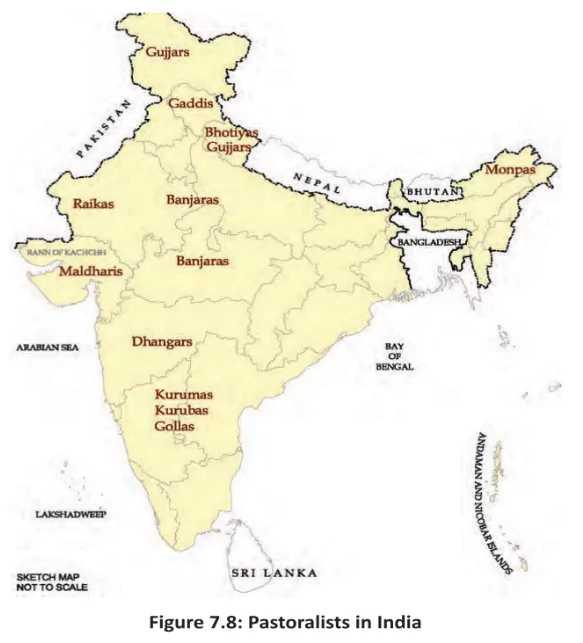![]() 19 Jul 2024
19 Jul 2024
Under colonial rule, pastoralist’s grazing grounds shrank, their movements were regulated, the revenue they had to pay increased, agricultural stock declined and their trades and crafts were adversely affected. The colonial state wanted to transform all grazing lands into cultivated farms. Land revenue was one of the main sources of its finance.
Expanding Cultivation: By expanding cultivation it could increase its revenue collection and at the same time produce more jute, cotton, wheat and other agricultural produce that were required in England.
By the mid-19th century, various Forest Acts were also being enacted and forests which produced commercially valuable timber like deodar or sal were declared ‘Reserved’. No pastoralist was allowed access to these forests.
British officials were suspicious of nomadic people. They distrusted mobile craftsmen and traders who hawked their goods in villages, and pastoralists who changed their places of residence every season, moving in search of good pastures.
To expand its revenue, the colonial government imposed taxes on land, canal water, salt, trade goods, and even on animals. Pastoralists had to pay tax on every animal they grazed on the pastures.
Shrinking Grazing Lands: When grazing lands were taken over and turned into cultivated fields, the available area of pastureland declined.
Some Pastoralists reduced the number of cattle in their herds since there was not enough pasture to feed large numbers. Others discovered new pastures when movement to old grazing grounds became difficult.

| Must Read | |
| Current Affairs | Editorial Analysis |
| Upsc Notes | Upsc Blogs |
| NCERT Notes | Free Main Answer Writing |
British colonial administration’s focus on revenue maximization led to policies that drastically impacted pastoralists. By converting grazing lands into cultivated fields and imposing strict forest regulations, they disrupted traditional livelihoods. Excessive taxation, coupled with criminalization of nomadic communities, marginalized pastoralists further. While some adapted, many suffered economic hardship and loss of autonomy. This legacy continues to influence the lives of pastoral communities in India.
| Related Articles | |
| AGRICULTURAL DEVELOPMENT | ADMINISTRATION BEFORE 1857: IMPACT OF BRITISH ADMINISTRATION |
| Land Revenue Systems in British India | ENVIRONMENT & ECOLOGY |
<div class="new-fform">
</div>